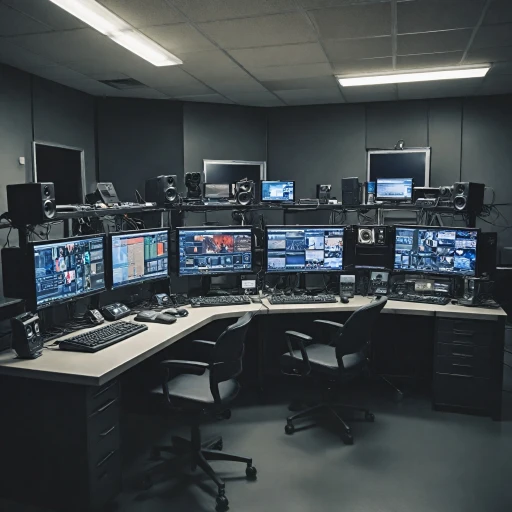Design and Build Quality
Visual Appeal and Construction
When considering the Canon G7X Mark II and Mark III, both models exhibit a sleek design that is characteristic of the Canon Powershot line. These compact cameras offer a durable build that is easy to handle, making them ideal for both amateur and professional photographers who need a reliable point-shoot option. Both the Mark II and Mark III boast a sturdy metal chassis, providing a sense of quality and resilience. However, the Mark III's slightly more refined design includes ergonomic improvements that can make a significant difference during extended sessions of photography or video recording.Functional Layout and Usability
The layout of controls is thoughtfully designed in both models. Buttons and dials are intuitively placed, allowing for quick adjustments whether you're capturing shots or shooting video. The touchscreen LCD is a boon for live streaming, enabling seamless navigation through settings and menus. The Mark III steps up with a slightly enhanced interface. The touchscreen on this model provides improved responsiveness, making it easier to select focus points and navigate through your images. While both cameras offer quality displays, the Mark III's screen offers a better viewing experience, especially useful for composing your photos.Portability and Convenience
These cameras, designed for on-the-go photography, keep portability in mind. They fit comfortably in your hand and are easy to slip into a bag. Whether you're on an urban adventure or a countryside excursion, the compact form of the Canon Powershot series ensures you are always ready to capture quality images or videos. A key factor to consider is battery life, which is robust in both models. This ensures you can take plenty of photos without frequent charging interruptions, although the Mark III offers a slight edge in battery power efficiency. For more insights into the importance of camera resolution and design, you might want to check understanding the power of a 6 megapixel camera to better appreciate the nuanced differences in sensor performance and design efficiency.Image Quality and Sensor Performance
Unveiling Image Delivery: Canon G7X Mark II vs Mark III
When diving into the image capabilities, the Canon PowerShot G7X Mark II and the Mark III both boast impressive qualities, yet they present distinct features for diverse photography needs. The heart of a camera’s photography capability lies in its sensor. Both the Mark II and Mark III are equipped with a 1-inch, 20.1 MP sensor which guarantees sharpness and clarity in each shot. This provides an exceptional advantage for compact cameras, often surpassing typical point-and-shoot models. When it comes to image quality, both can cater to low-light conditions superbly, thanks to a high sensitivity range (especially advantageous when compared to some competitors in its class like Sony). However, the Mark III brings enhanced performance with a newer DIGIC 8 image processor, enabling a wider range of processing capabilities that translate into better low light image clarity. The Mark III also takes a step forward by providing RAW burst mode which delivers rapid shots without losing image quality, a significant boost for photographers seeking precision in capturing fast-paced scenes or live events. Although there isn't a major leap in overall sensor performance, the Mark III's refinements in processing and autofocus enhancements make it particularly appealing for someone who prioritizes high-speed shooting and dynamic range. For enthusiasts looking to explore videography and see how these cameras compare in video recording, the following section might be of interest, featuring insights on how both models deliver seamless video quality supported by reliable autofocus systems.Video Capabilities
Video Recording and Content Creation
Both the Canon G7X Mark II and Mark III cater to creators who prioritize video quality. However, these compact cameras offer distinct differences that might sway your decision.- Canon G7X Mark II: This model provides full HD 1080p video recording, ensuring high-quality footage for personal projects or casual documenting. The Powershot Mark II offers an impressive optical image stabilization system, which minimizes shake during handheld shooting. Although it lacks 4K capabilities, its battery life and video recording features deliver dependable performance for everyday use.
- Canon G7X Mark III: The Mark III takes a significant leap forward with 4K video capabilities, rivaling some of the higher-end cameras from renowned brands like Sony. Not only does this offer sharper, more detailed videos, but it also includes additional features like live streaming to platforms—a feature increasingly sought after by vloggers and social media influencers. The Mark III Canon also supports vertical video shooting, designed to complement smartphone viewing.
Autofocus and Shooting Speed
Autofocus Performance and Shooting Speed
When considering the autofocus capabilities of the Canon G7X Mark II and Mark III, it’s essential to understand how these compact cameras handle capturing those fleeting moments. The autofocus system is a critical component, especially for those who frequently shoot moving subjects or in low light conditions.
The Canon G7X Mark II offers a reliable autofocus system that performs well for a point-and-shoot camera. It provides decent tracking for subjects, which is suitable for casual photography. However, if you’re looking for better performance, the Mark III introduces enhancements that might catch your interest. The Mark III's autofocus is more responsive, particularly in video recording, making it a solid choice for those interested in live streaming or capturing high-quality video content.
In terms of shooting speed, both models offer competitive burst modes, but the Mark III edges out slightly with a faster continuous shooting rate. This can be particularly beneficial when capturing action shots or when you need to ensure you get the perfect image without missing a beat.
Battery life is another factor to consider when evaluating these cameras' performance. Both models use similar battery power, but heavy use of the autofocus and shooting features might drain the battery quicker. It's advisable to have a battery charger handy, especially if you're planning a long day of shooting.
Ultimately, if autofocus quality and shooting speed are high on your priority list, the Canon G7X Mark III might be the better choice. However, the Mark II remains a strong contender for those who prioritize other features, such as image quality and sensor performance, which are discussed in other sections of this comparison.
Connectivity and Additional Features
Connectivity Enhancements and Extra Perks
When it comes to connectivity and extra features, both the Canon G7X Mark II and III offer significant advancements that cater to the needs of modern photographers. The G7X Mark III, in particular, has been tailored to suit more current technological demands, such as live streaming capabilities, which makes it an ideal choice for vloggers and content creators. Both models boast built-in Wi-Fi and Bluetooth, allowing for easy transfer of images to your smartphone or other devices. This capability ensures that sharing your images and videos on social media platforms is quick and hassle-free, enhancing the overall shooting experience. Here’s a closer look at some of the connectivity and additional features:- Live Streaming: The PowerShot Mark III comes equipped with live streaming functionality, a feature absent in the Mark II, giving it an edge for creators who need this capability.
- USB Charging: While both models support USB charging, the III Canon version has a more efficient charging system, allowing for extended shooting sessions without swapping the battery frequently.
- External Microphone Support: The Mark III includes a 3.5mm mic input, which is crucial for users aiming for better audio quality in their video recording.
- ND Filter: Built-in neutral density filter in both models provides a creative edge when capturing shots in bright environments.
Price and Value for Money
Evaluating Cost and Overall Value
When deciding whether to purchase the Canon G7X Mark II or Mark III, budget considerations naturally come into play. Both cameras offer a compelling set of features for those looking to capture stunning images and high-quality video. The Canon G7X Mark II is often viewed as a great entry-point for those venturing into the realm of vlogging or travel photography. Priced more affordably than its successor, it offers solid image quality thanks to its responsive sensor and reliable autofocus system. Its robust build and intuitive design make it a favorite in the realm of compact cameras, providing excellent value, especially for those who prioritize photography over advanced video capabilities. On the other hand, the Canon G7X Mark III tends to demand a higher price, reflecting its enhanced video capabilities. Its ability to support live streaming and offer superior video recording options caters to the demands of modern content creators. Alongside improved autofocus responsiveness and faster shooting speed, the Mark III model emerges as a worthy investment for anyone looking to expand into professional-quality footage. Additional features such as stronger connectivity options, including Bluetooth and Wi-Fi, augment the Mark III's offering, making it more relevant in a tech-driven world. However, prospective buyers should assess the significance of these features against the price differentials.- Canon G7X Mark II: More budget-friendly, suitable for still photos and casual video use
- Canon G7X Mark III: Higher price point, excels in video quality and connectivity


